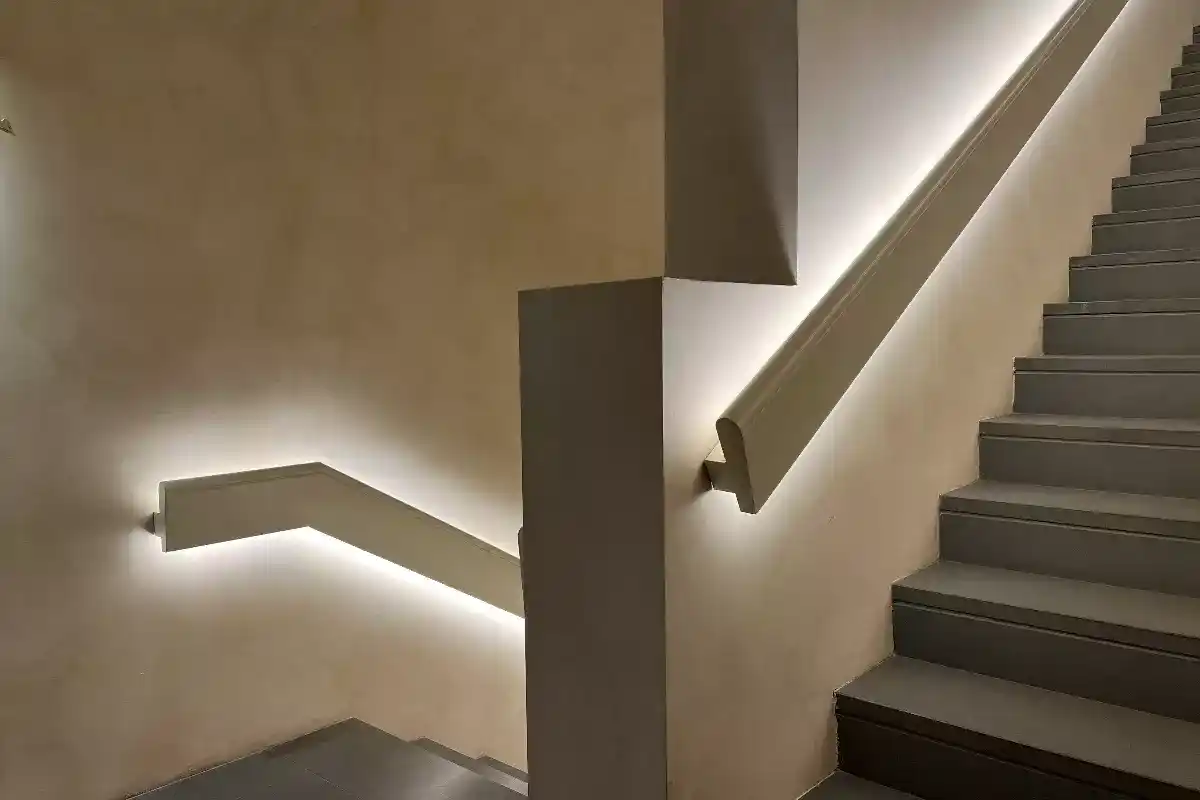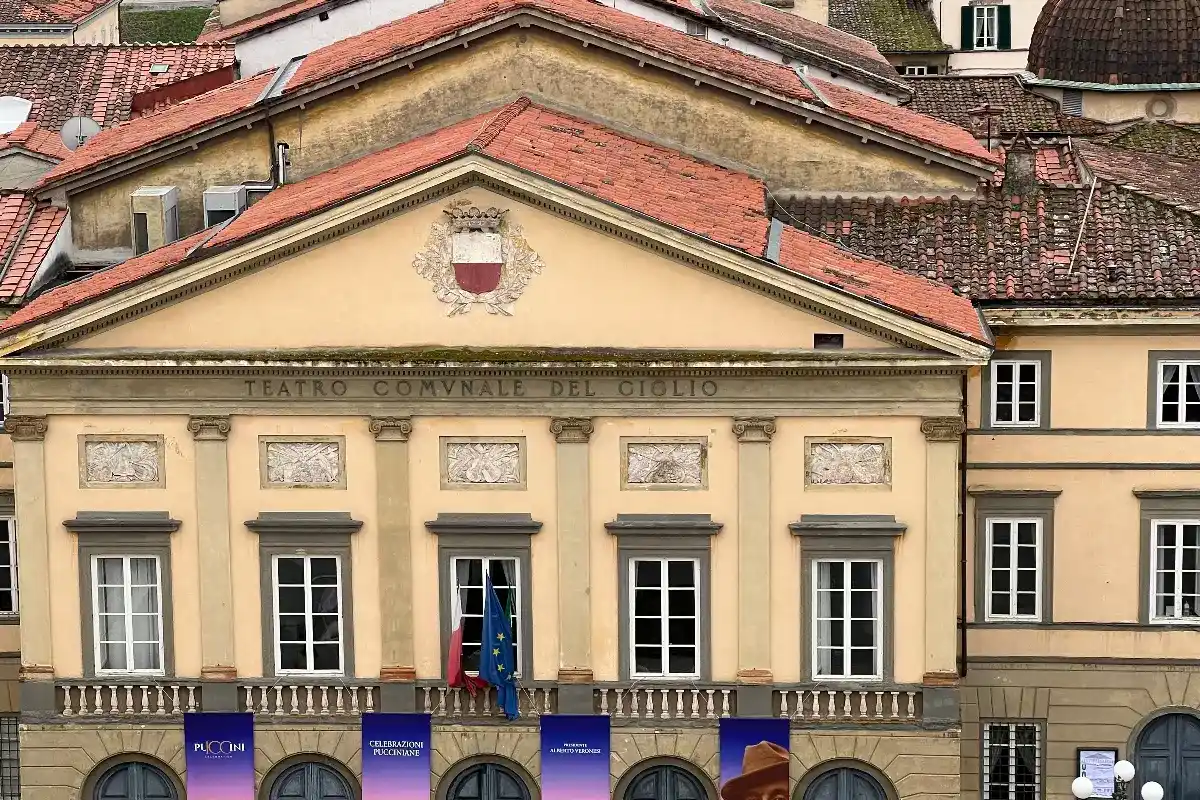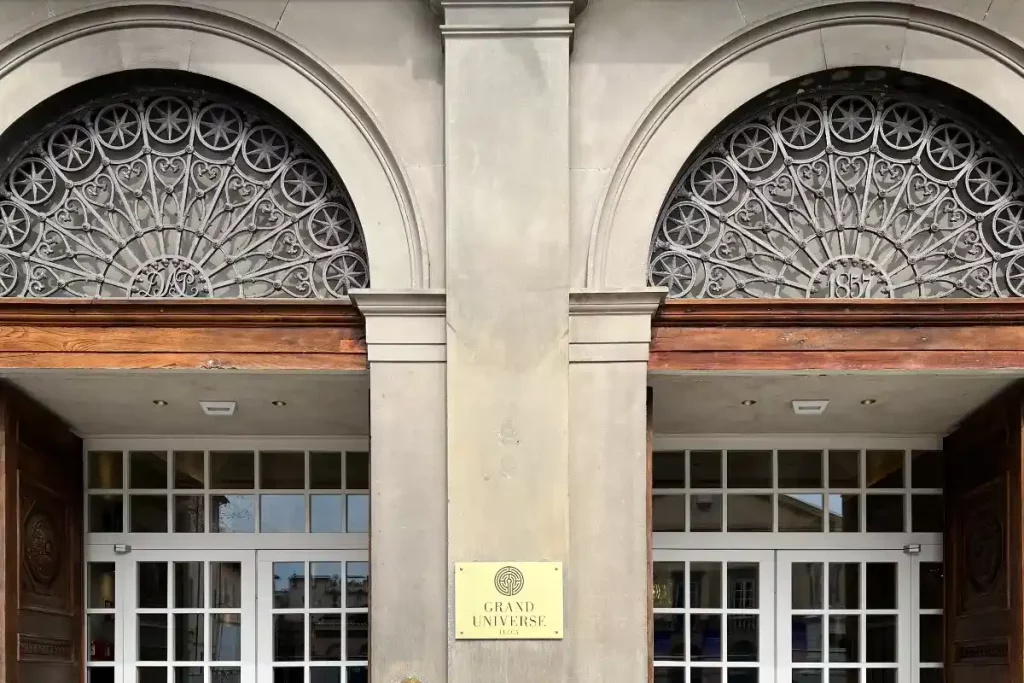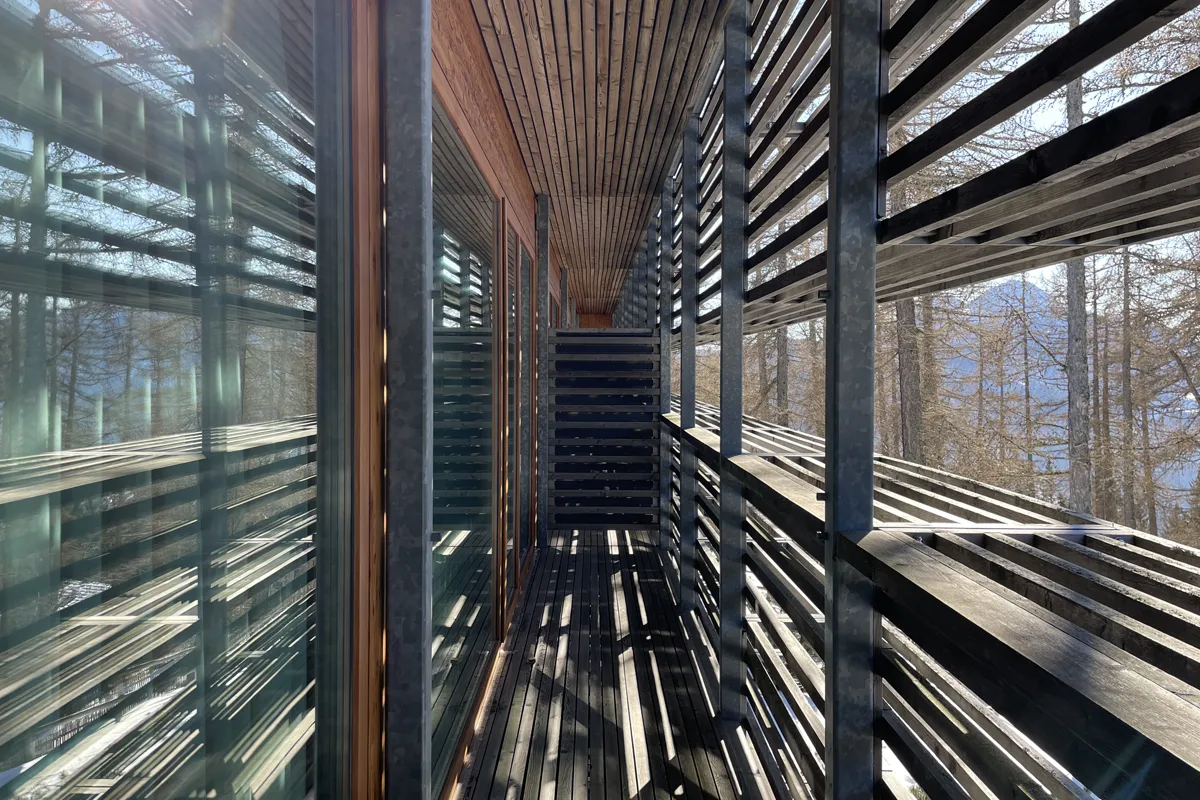A hotel since 1857, a recent restoration has strengthened Grand Universe Lucca’s link to the past and projected it into the contemporary – while remaining the epicenter of the city of a hundred churches
Lucca: city of a hundred churches – a journey to discover the city with the Grand Universe Lucca at its heart
Lucca, the city of a hundred churches. Ascending to the top floor of the Grand Universe Lucca, one can count, one by one, the bell towers that punctuate the skyline of this Tuscan city. We are at one of the highest points in the city. The seventeenth-century palace housing the hotel stands in what was once a master glassblower’s workshop in Roman times. Once belonging to the noble Paoli family, the palace was converted into a hotel in 1857. Following a renovation led by Archea Associati S.r.l., the palace has been restored to its former glory: elements such as the foundations of the walls dating back to Roman times and the remains of the ancient glassblowing workshop located in the basement have been preserved.
We are in the heart of Lucca’s historic center, at the convergence of two squares: Piazza Napoleone – named in honor of Napoleon Bonaparte, who ruled the city in the nineteenth century (a central equestrian statue depicts him, erected in 1861); and Piazza del Giglio – named after the Teatro del Giglio, a lyric theater inaugurated in 1817, a landmark for culture and entertainment in the city.
From the top floor of the Grand Universe – which has been transformed into a champagne bar – one can appreciate even more the energy of this city, vibrant and colorful, one of the most visited in Tuscany (according to data from the Lucca municipality’s tourism office, overnight stays increased by 14% in the first 7 months of 2023). The gaze wanders through an intricate street maze. The Guinigi Tower stands out, with its majestic holm oaks reaching towards the sky – one of the few remaining medieval towers in the city, with a hanging garden on top. Beyond the treetops, churches and medieval buildings emerge like jewels set in the urban landscape. These jewels are witnesses to Lucca’s rich history and spirituality.
Lucca’s towers inspired Peter Greenaway: the director is in town with Dustin Hoffman for the new movie filming
American director Peter Greenaway fell in love with Lucca and its towers over ten years ago when he attended the Lucca Film Festival with his work The Towers – Lucca Hubrism. For the occasion, he illuminated the facade of the Church of San Francesco for 35 minutes, the setting for “architectural cinema”. It consisted of 22 stories, some absurd, entertaining, and grotesque, set in medieval Lucca, told by mixing visual arts and performance using advanced hardware and software technologies.
Bernardino Bernardi built his tower with the money he had set aside for a pilgrimage to Jerusalem – he justified it by saying that building high was a way to get closer to God. Contessa Verrachi walled herself in her brother’s Black Tower for fear of her love for him. Leone Morgantini built his family’s tower with poor materials to collapse on his ambitious wife, finally destroying her and her hateful aspirations for social ascent.
Peter Greenaway has returned to Lucca for his next film. The story of a New York writer who takes a sabbatical year to visit Lucca, in order to explore his Italian origins. Against the backdrop of the world of 2001, the year of the Twin Towers attack. The lead actor is Dustin Hoffman, who is currently in Lucca for filming the movie.
Lucca, the city of music
Lucca inspired many artists, and continues to do so today. But before being a city of cinema, Lucca is the city of music. Renowned worldwide as the birthplace of composer Giacomo Puccini, here the Puccini Festival was born: every summer, the city transforms into an outdoor stage, with performances celebrating Puccini’s genius and his musical legacy. The Lucca Summer Festival, with its performances by world-famous international artists, brings vibrant and festive energy to the city streets, attracting thousands of spectators from every corner of the globe.
The influence of the Lucchese music scene is one of the greatest inspirational forces behind the hotel’s philosophy. Maestro Giacomo Puccini was a regular guest at the hotel. Chet Baker, a historic jazz icon, stayed here during his Italian adventure. The connection with the Tuscan Maestro is still present within the hotel, as the Maestro Suite and the “Puccini”, the hotel’s signature cocktail made with prosecco and mandarin juice, are named after him.
The rooms of the Grand Universe – fifty-five in total – celebrate musical heritage through their names – the Piccolo, Adagio, Vivace, Allegro, Aria Junior Suite, Puccini Junior Suite, and Maestro Suite. These rooms pay homage to classical music and great compositions. In the Symphony Lounge, a grand piano is placed in the center.
Design and tribute to Tuscany at the Grand Universe Lucca
The colors of the rooms, chosen from a palette that includes earth, wood, and gold, pay tribute to Tuscany and the gifts of nature that have made it great: a fertile and rich land, a warm and welcoming sun. The fabrics, in silk and velvet, are another tribute to the region and its craftsmanship. The suspended lights recall glassblowing, an activity that in ancient Roman times was carried out where the Grand Universe Lucca now stands.
Grand Universe Lucca – La Residenza: decorated with creations illustrating the silk tradition
A short walk from the Grand Universe Lucca, stands a noble residence with ancient history: the Grand Universe La Residenza, on Via della Polveriera. It was built in 1572, at the beginning of Lucca’s modern period, when the city was renovated following the expansion of the walls carried out by two renowned Renaissance architects, Alessandro Resta and Vincenzo Civitali.
The residence belonged to one of Lucca’s noblest families, the Mansi, known throughout Europe for their silk trade. In Lucca, this trade flourished in the 8th century, through the Silk Road, which connected East and West. By the end of the twelfth century, city merchants began producing silk and exporting it to France and the rest of Europe. During the Renaissance, owning the coveted Lucca silk was almost obligatory for all European noble families. Over the years, Lucca developed increasingly advanced processing techniques.
Grand Universe La Residenza is decorated with creations illustrating the silk tradition, as a tribute to the Mansi family’s heritage. All the luxury residences are self-catering and named after the flora and aromas of Lucca.
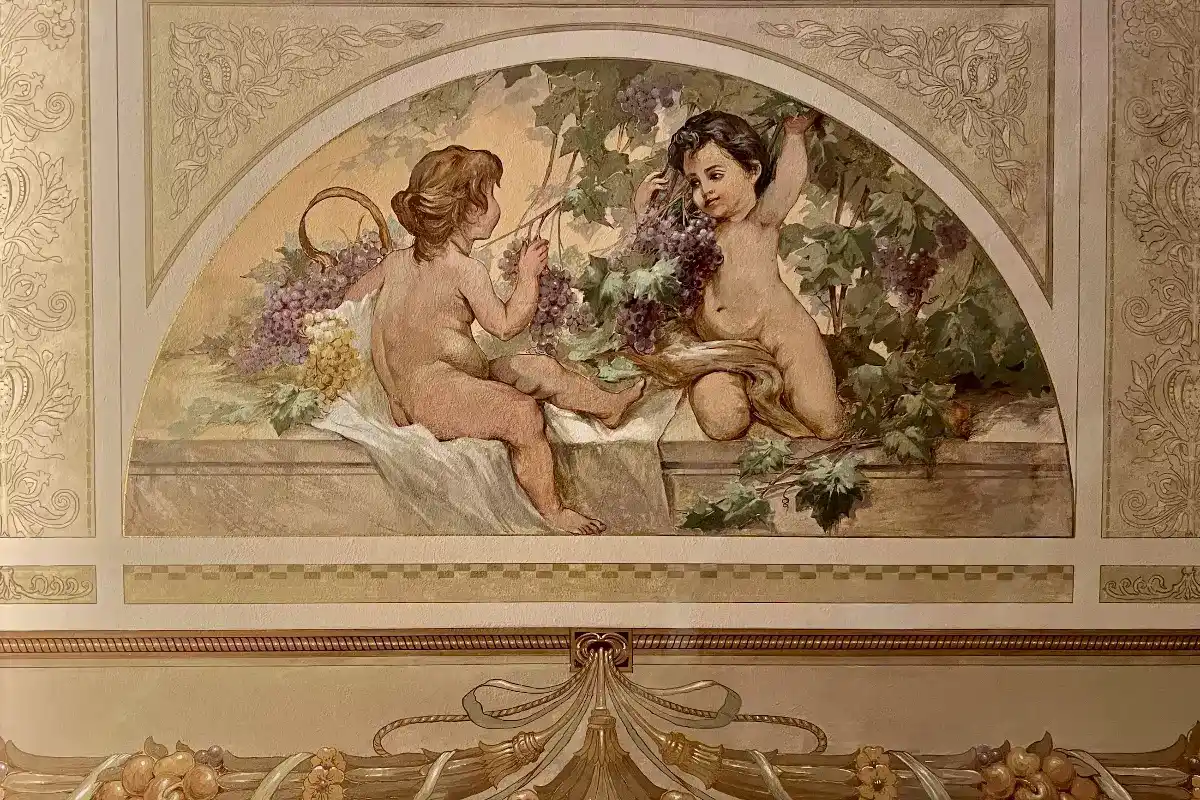
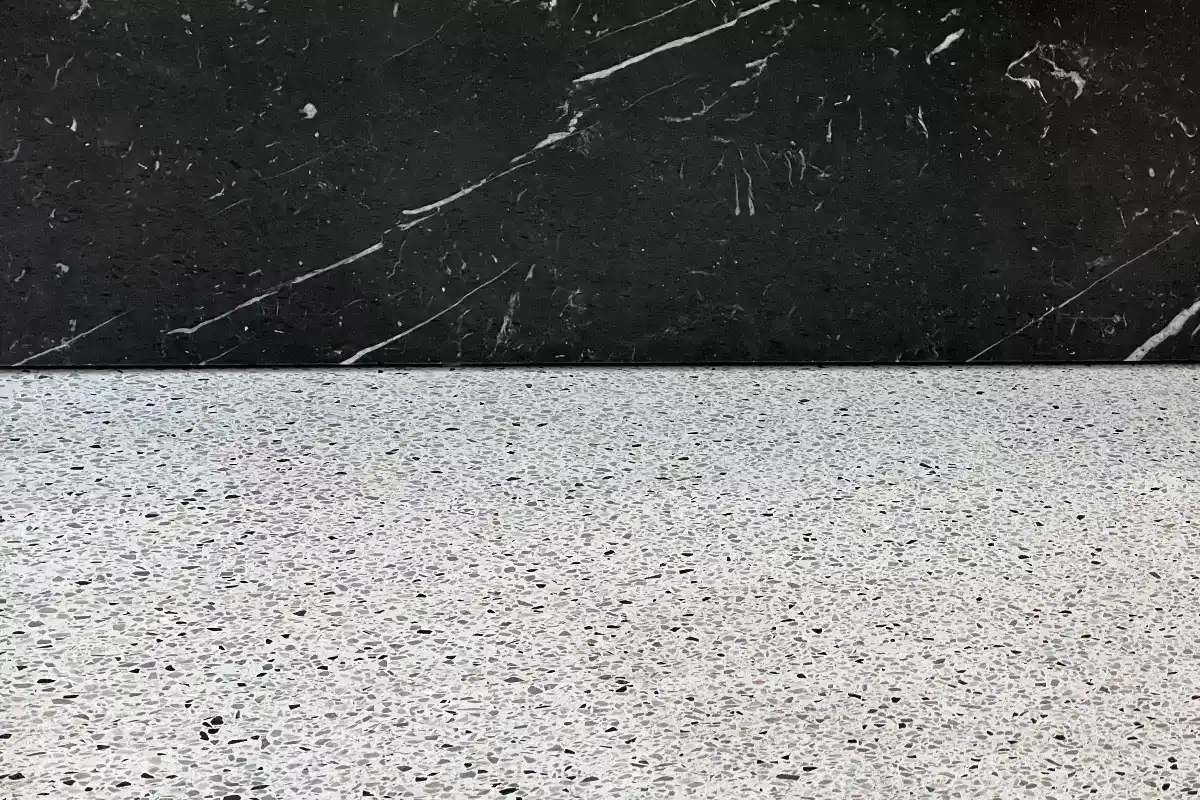

Grand Universe Lucca, part of Autograph Collection Hotels – Marriott Group
Grand Universe Lucca is part of the Autograph Collection Hotels portfolio, a brand of the Marriott Group that brings together the most unique properties linked to the territory. Grand Universe Lucca is owned by Marcucci Italia and Shaner Italia and managed by Shaner Ciocco Properties. Both are divisions of Shaner Corporation, a leading hospitality owner, operator, and developer.
Lucca – Some Historical Facts and Churches
Lucca’s origins (presumably from the Latin “Lucus,” alluding to the woods that once surrounded the city) date back to ancient Etruscan times. However, it was under Roman rule that the city experienced prosperity. The mighty walls that still encircle its historic center testify to this glorious past. Built in the sixteenth century, they represent one of the few perfectly preserved Renaissance fortifications. Even today, on sunny days, locals and tourists stroll or play sports activities along them. From this vantage point, one overlooks the city, counting the bell towers that dot the landscape: Lucca, the city of a hundred churches.
The churches scattered throughout the city tell millennia-old stories of devotion and faith. The Cathedral of San Martino, with its majestic facade, is one of the main places of worship in the city. Inside, one finds the Holy Face relic: a wooden crucifix depicting Christ. It is considered one of the oldest and most revered devotional objects in Europe. According to legend, the crucifix was carved by Nicodemus, a disciple of Jesus, using the wood from the cross on which he was crucified. Tradition holds that the work was brought to Lucca by a Lombard pilgrim in 782, during iconoclastic persecutions in the Byzantine Empire. The Church of San Michele in Foro, with its facade adorned with sculptures, is an example of medieval architecture; then there is the Basilica of San Frediano, with its mosaic on the facade depicting the Last Judgment.
Matteo Mammoli
